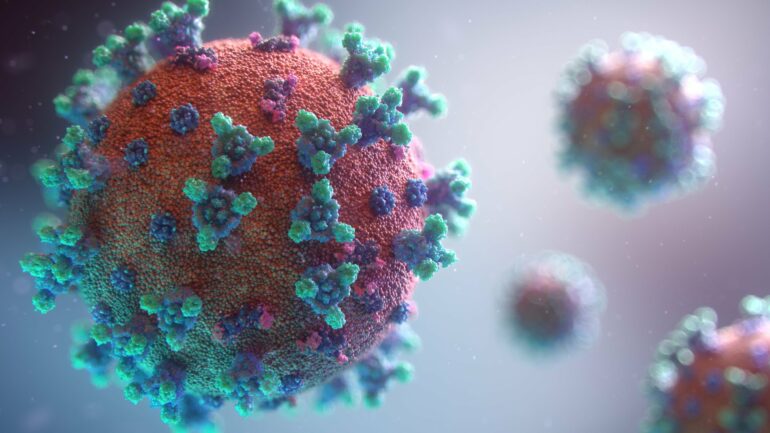Duke researchers have developed a way to use gene-editing to prevent and treat COVID-19 in mice, which they believe holds promise for people.
They are the first researchers to demonstrate that CRISPR, a powerful gene-editing tool, can be used against COVID-19. The group, led by Duke School of Medicine professor Qianben Wang, published their results in Nature Chemical Biology on Tuesday.
If further research proves the treatment is effective in humans, it could offer a prevention strategy that lasts several days and can withstand constantly changing coronavirus variants.
How it works
This treatment centers around an enzyme called CTSL, which coronaviruses need in order to enter human cells.
Researchers have long tried to wipe out CTSL to stop coronavirus infections but ran into a problem: The enzyme is also essential for many of the body’s normal processes.
Wang and his team used two strategies for addressing that problem.
First, they developed an extremely targeted method for making sure CRISPR only targets lung cells. He said 94% of the nanoparticles injected into the mice’s bodies reached the lungs. His lab has a patent pending in both the United States and Europe for the nanoparticle technology.
They also used a gene-editing strategy that only stops CTSL production for a couple of days to a week, offering promise that the body can continue functioning normally afterward.
Together, these methods safely and and effectively stopped COVID-19 from entering mice cells and quickly stopped the virus in mice who were already infected.
Preventing COVID-19 with gene-editing, a DNA- and RNA-level intervention that has spurred innovation in several fields, has a number of advantages over the currently available vaccines.
The three vaccines on the market work by identifying the virus’ spike protein and rallying the immune system to attack it. That means if the spike protein changes, the vaccine’s efficacy can wane—a fact that health officials are now grappling with as new omicron subvariants pop up.
By contrast, the CRISPR method doesn’t need to find the coronavirus to kill it. It targets the supply of an enzyme all coronaviruses rely on, making it resilient against the virus’ constant mutations.
Because the lab’s strategy also does not depend on the body’s immune system, there could be another benefit if this works in people. It may be a better way to protect people with compromised immune systems who have not benefited from vaccines.
Next steps
This technology is still a long way from being proven to be effective in people, never mind be available to the public.
It would have to undergo rigorous clinical trials in humans before the Food and Drug Administration would approve it. Wang’s lab is looking for investments and potentially an industry partner to expedite that process.
They are also continuing to research whether the treatment could be administered via an aerosol instead of an IV. Wang said he envisions people carrying something like an asthma inhaler with them to big sporting events or long plane rides and taking a puff before or shortly after to reduce their risk.
“We want the therapy to enter the real world,” Wang said.
More information:
Zhifen Cui et al, Cas13d knockdown of lung protease Ctsl prevents and treats SARS-CoV-2 infection, Nature Chemical Biology (2022). DOI: 10.1038/s41589-022-01094-4
2022 The Charlotte Observer.
Distributed by Tribune Content Agency, LLC.
Citation:
Researchers edit genes to prevent, treat COVID-19 in the lab. Will it work in people? (2022, July 27)
